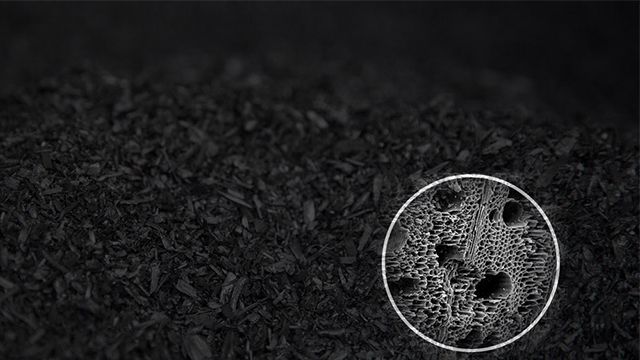Ensuring Biochar Production Meets EBC Standards
- By Beston Charcoal
- •
- 22 Mar, 2025
- •
Selecting Appropriate Feedstock
The quality of biochar begins with the selection of feedstock. To meet EBC standards, it is crucial to choose raw materials that are free from contaminants such as heavy metals, chemicals, and toxic substances. Ideal feedstocks include agricultural waste, forestry residues, or other organic materials that can undergo pyrolysis to produce stable, high-quality biochar. The feedstock should also have a consistent particle size and moisture content to ensure uniformity in the pyrolysis process.
EBC standards emphasize the need for feedstocks that contribute to the sustainability of biochar production. Materials such as wood chips, straw, and crop residues are often preferred, as they not only meet the required quality standards but also help maintain a sustainable, renewable feedstock supply. The diversity of feedstocks used can influence the final biochar characteristics, such as its carbon content, surface area, and porosity.

Pyrolysis Process Control
The key to producing biochar that meets EBC standards lies in precise control of the pyrolysis process. This involves managing temperature, pressure, and residence time to ensure the stability and purity of the biochar. Biochar production occurs in a biochar pyrolysis machine, where feedstock is heated in an oxygen-limited environment to break down organic material into solid carbon (biochar), liquid (bio-oil), and gas (syngas).
-
Temperature Management: The pyrolysis temperature plays a crucial role in determining the final biochar's quality. For high-quality biochar that meets EBC standards, temperatures typically range between 400°C and 700°C. Higher temperatures generally increase the carbon content and stability of biochar but may result in reduced yield. Therefore, balancing temperature and other process parameters is vital to optimize both quality and yield.
-
Residence Time: The residence time refers to the length of time the feedstock remains in the pyrolysis reactor. A longer residence time often leads to more complete carbonization, producing biochar with better structural properties. However, extended residence time may also reduce the yield of biochar. The key is to optimize the residence time based on the feedstock type and desired biochar characteristics.
-
Heating Rate: The rate at which the temperature is increased also affects the biochar's properties. A rapid heating rate can result in higher volatiles content and a less stable biochar, which does not meet EBC standards. Slower, controlled heating allows for more complete pyrolysis, improving the carbon sequestration ability of the biochar and enhancing its stability.
-
Oxygen Availability: In the pyrolysis machine, maintaining an oxygen-free or low-oxygen environment is crucial for preventing combustion. Inadequate oxygen levels lead to the production of carbon-rich biochar, whereas higher oxygen content can lead to incomplete carbonization, reducing the biochar’s value. Monitoring and controlling the oxygen levels within the reactor is vital for ensuring the production of biochar that aligns with EBC standards.
Carbon Content and Stability
Biochar's carbon content is one of the key parameters for meeting EBC standards. High carbon content increases the biochar's effectiveness in carbon sequestration and enhances its suitability as a soil amendment. The production process, including temperature and feedstock quality, directly influences the biochar's carbon content. Biochar with a carbon content of at least 50% by weight is typically required to meet EBC standards.
Biochar stability is also important for ensuring long-term benefits. Stable biochar has a high degree of resistance to microbial degradation, which allows it to persist in soil for extended periods. The stability of biochar is primarily influenced by its carbon structure, which can be optimized through controlled pyrolysis.
Ensuring Compliance with EBC Standards
Once the biochar is produced, it must undergo rigorous testing to confirm that it meets EBC standards. These standards focus on various aspects such as carbon content, volatile matter, pH levels, and the presence of potentially harmful substances like heavy metals.
-
Heavy Metals and Contaminants: One of the primary concerns in biochar production is the potential for contamination by heavy metals or toxic substances. A biochar machine should be designed to prevent contamination, ensuring that feedstocks free of harmful chemicals are used. Additionally, post-production testing ensures that the biochar does not exceed the permissible limits for heavy metals set by the EBC.
-
pH and Electrical Conductivity: EBC standards also specify acceptable pH levels for biochar, as this directly affects its suitability as a soil amendment. Biochar typically has a pH range of 7 to 9, which is ideal for improving soil health. Electrical conductivity (EC) testing is also performed to ensure that the biochar is not overly saline, which could harm soil quality.
-
Surface Area and Porosity: The surface area and porosity of biochar determine its ability to retain water and nutrients, which is a key factor in soil health. The EBC standards require biochar to have a high surface area and well-developed pore structure to ensure its effectiveness as a soil conditioner. These properties are influenced by the pyrolysis temperature and the feedstock used.
